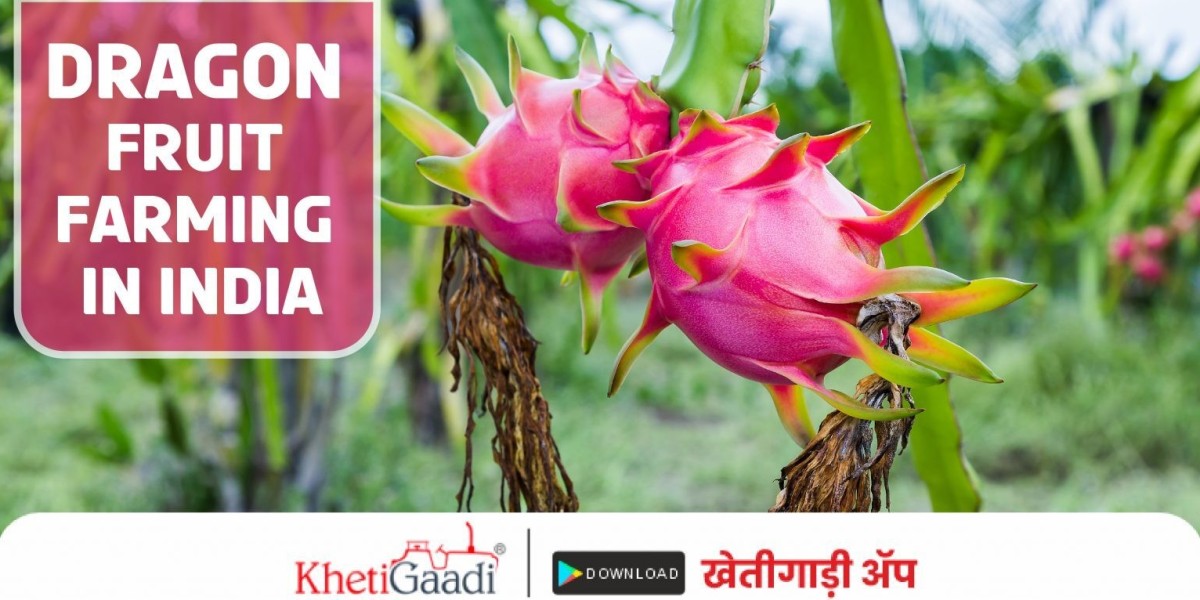Dragon fruit, with its vibrant colors and unique appearance, has become a popular tropical fruit across the globe. This exotic fruit, also known as pitaya, is not only rich in nutrients but also offers significant commercial opportunities for farmers. Dragon fruit farming can be approached through both commercial farming and traditional farming methods, each offering distinct advantages and challenges. In this article, we delve into the nuances of dragon fruit farming, exploring how both commercial and traditional farming practices can be employed to cultivate this remarkable fruit.
The Rise of Dragon Fruit Farming
The dragon fruit farm industry has seen substantial growth in recent years due to increasing demand for the fruit's nutritional benefits and its potential as a high-value crop. Originating from Central America, dragon fruit is now cultivated in various parts of the world, including Southeast Asia, India, and Australia. The fruit's unique taste, combined with its health benefits, has made it a favorite among health-conscious consumers and food enthusiasts.
Commercial Farming: Scaling Up for Market Demand
Commercial farming of dragon fruit involves large-scale operations that prioritize efficiency, productivity, and profitability. This approach typically employs modern agricultural techniques, advanced technology, and systematic planning to maximize yield and ensure consistent quality.
Advantages of Commercial Farming
1. High Productivity:
Commercial farms utilize intensive cultivation methods, such as high-density planting and the use of trellises, to increase the number of plants per hectare. This results in higher yields compared to traditional farming methods.
2. Quality Control:
By implementing standardized practices, commercial farms can maintain consistent fruit quality. This is crucial for meeting market demands and ensuring customer satisfaction.
3. Technological Integration:
Commercial farming often incorporates advanced technologies such as drip irrigation, automated fertigation systems, and climate control measures. These technologies optimize water and nutrient usage, reduce labor costs, and improve overall farm management.
4. Market Access:
Large-scale operations have better access to markets, both domestic and international. This allows commercial farms to capitalize on the growing demand for dragon fruit and negotiate better prices for their produce.
Challenges of Commercial Farming
1. High Initial Investment:
Establishing a commercial dragon fruit farm requires significant capital investment in land, infrastructure, and technology. This can be a barrier for small-scale farmers or those new to the industry.
2. Environmental Impact:
Intensive farming practices can lead to soil degradation, water depletion, and increased use of chemical fertilizers and pesticides. Sustainable farming practices are essential to mitigate these environmental concerns.
3. Market Fluctuations:
Commercial farmers are vulnerable to market fluctuations and price volatility. Overproduction can lead to a surplus, driving down prices and affecting profitability.
Traditional Farming: Preserving Heritage and Sustainability
Traditional farming methods have been practiced for generations, often rooted in the cultural and environmental contexts of the region. While traditional dragon fruit farming may not match the scale and efficiency of commercial operations, it offers unique benefits that contribute to the sustainability and resilience of agriculture.
Advantages of Traditional Farming
1. Low Input Costs:
Traditional farming relies on natural resources and manual labor, reducing the need for expensive inputs such as chemical fertilizers and pesticides. This makes it a viable option for small-scale farmers with limited capital.
2. Biodiversity Conservation:
Traditional farming practices often involve polyculture, where multiple crops are grown together. This enhances biodiversity, improves soil health, and reduces the risk of pests and diseases.
3. Cultural Preservation:
Traditional farming methods are deeply intertwined with local customs and traditions. By preserving these practices, farmers contribute to the cultural heritage of their communities.
4. Sustainability:
Traditional farming emphasizes sustainable practices such as composting, crop rotation, and natural pest control. These methods promote long-term soil fertility and minimize environmental impact.
Challenges of Traditional Farming
1. Lower Productivity:
Traditional farming methods may result in lower yields compared to commercial farming. This can limit the farmer's ability to meet market demand and achieve significant economic gains.
2. Labor Intensive:
Traditional farming is often labor-intensive, requiring considerable time and effort. This can be a constraint, especially in regions where labor is scarce or expensive.
3. Limited Market Access:
Small-scale traditional farmers may struggle to access larger markets and secure fair prices for their produce. This limits their ability to benefit from the growing demand for dragon fruit.
Integrating Both Approaches for a Sustainable Future
The future of dragon fruit farming lies in finding a balance between commercial and traditional approaches. By integrating the strengths of both methods, farmers can create a sustainable and profitable farming system.
1. Agroecological Practices:
Combining modern agricultural techniques with traditional knowledge can enhance productivity while preserving environmental health. Practices such as integrated pest management, organic farming, and agroforestry can be adopted to achieve this balance.
2. Community-Based Farming:
Encouraging cooperative farming models can help small-scale farmers pool resources, share knowledge, and access markets more effectively. This promotes economic resilience and community development.
3. Research and Innovation:
Ongoing research and innovation are crucial for improving dragon fruit farming practices. By investing in research, farmers can develop new varieties, optimize cultivation techniques, and address challenges related to climate change and pests.
Conclusion
Dragon fruit farming offers immense potential for both commercial and traditional farmers. While commercial farming focuses on maximizing yield and profitability, traditional farming emphasizes sustainability and cultural preservation. By integrating the best practices from both approaches, farmers can cultivate dragon fruit in a way that is both economically viable and environmentally sustainable. As the demand for dragon fruit continues to grow, the adoption of balanced farming practices will be key to ensuring a prosperous and resilient agricultural future.








